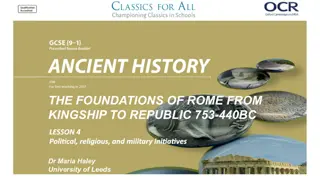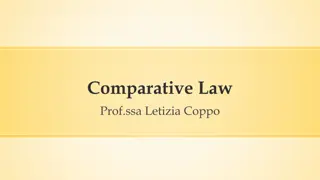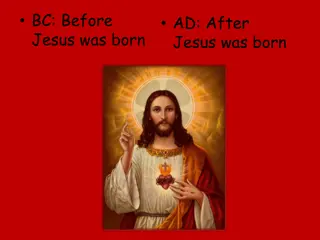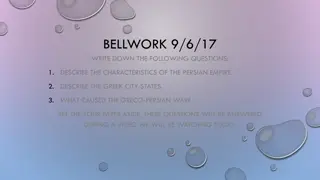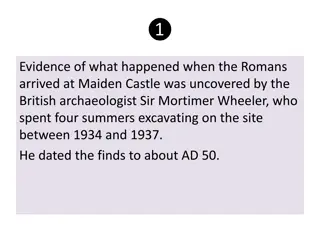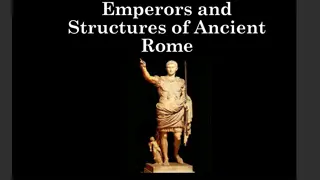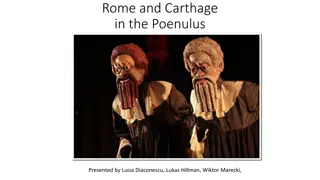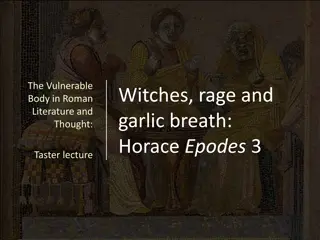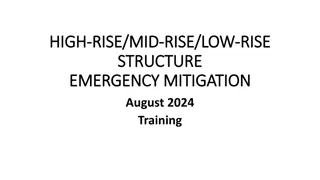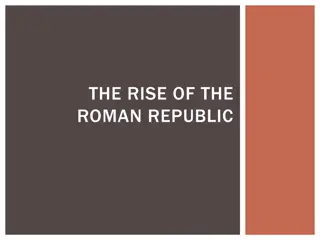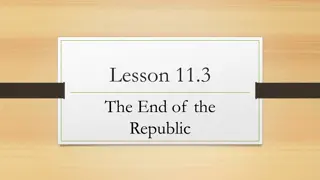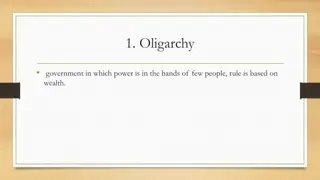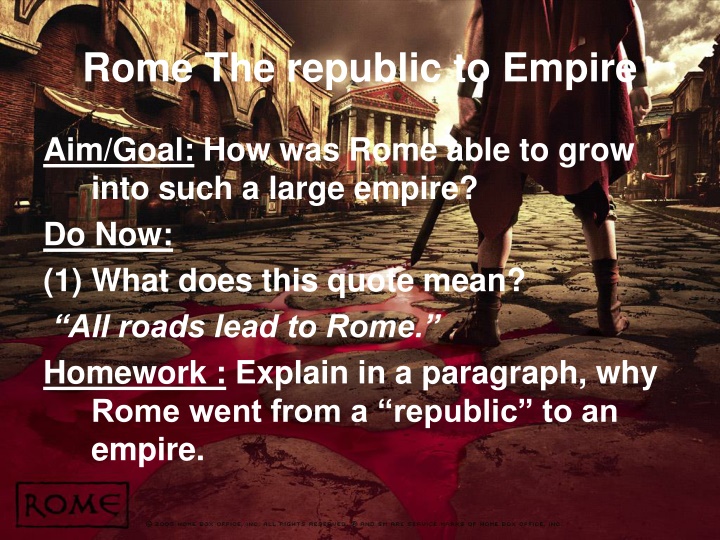
Rome: Republic to Empire - Growth Factors and Transition Overview
Discover how Rome expanded into a vast empire and the transition from a republic to an empire. Explore the geographical advantages, Greek influence, and internal dynamics that contributed to Rome's growth. Uncover the reasons behind Rome's shift in governance system and the key events that shaped its path to empirehood.
Download Presentation

Please find below an Image/Link to download the presentation.
The content on the website is provided AS IS for your information and personal use only. It may not be sold, licensed, or shared on other websites without obtaining consent from the author. If you encounter any issues during the download, it is possible that the publisher has removed the file from their server.
You are allowed to download the files provided on this website for personal or commercial use, subject to the condition that they are used lawfully. All files are the property of their respective owners.
The content on the website is provided AS IS for your information and personal use only. It may not be sold, licensed, or shared on other websites without obtaining consent from the author.
E N D
Presentation Transcript
Rome The republic to Empire Aim/Goal: How was Rome able to grow into such a large empire? Do Now: (1) What does this quote mean? All roads lead to Rome. Homework : Explain in a paragraph, why Rome went from a republic to an empire.
1. What country is Rome located in? 2. Greece and Rome have geography in common. List two things that you see in this map that prove this.
Protection The Alps and the Mediterranean Sea provided protection for Rome
ACTIVITY: You were placed in groups of three (3) for a reason. Each of one of you have been assigned either documents #2,3, or 4. You will answer all questions in full sentences of your assigned document. YOU HAVE 10 MINUTES TO DO THIS. REMEMBER TO WRITE IN FULL SENTENCES.
DOCUMENT #2 Republic The city of Rome was founded by the Latin people on the river in the center of Italy. It was a good location, which gave them a chance to control all of Italy. It put them near the midpoint of the Mediterranean Sea. Two groups lived in what is now called Italy: the Greeks in the South, and the Etruscans in the north. The Romans borrowed some ideas from both people. In 509 B.C., Romans overthrew the Etruscan king who had ruled over his people and Rome. The Romans said Rome was now a republic. A republic is a government in which citizens have the right to select their own leader. 3. The advantages of Rome s location was ___________ ________________________________________________________ _____________________________________________________ 4. A republic is __________________________________________. Have you ever heard the word republic before? Explain if you have.
Control of Rome In the beginning 3 groups inhabited Rome: 2. Greeks 3. Etruscans 1. Latins
Greek Influence Greeks established 50 colonies (settlements) in Italy These cities became busy with trade Brought Italy and Rome in closer contact with Greece Greeks taught Romans how to grow grapes and olives
DOCUMENT #3 The Punic Wars In the fourth century B.C. (300-399), Rome began to get larger. Within 150 years, it had captured almost all of Italy. Rome allowed some of the conquered people to enjoy the benefits of citizenship. With its good location, Rome saw growth in trade. This brought it into conflict with Carthage, a trading city in North Africa. From 264 to 146 B.C., Rome and Carthage fought three bitter wars called the Punic Wars. In the first war, Rome won control of the island of Sicily. In the second, Hannibal, a brilliant (smart) Carthaginian General (High ranking military man) invaded north of Italy. He and his soldiers did much damage. But he was unable to take Rome. By the time of the third war, Carthage was no longer a threat to Rome. Even so, Rome destroyed the city and made its people slaves. Carthage became a new Roman province (area; territory). 5. During the Punic Wars there were _______________wars. 6. ______________________and ______________________fought in the Punic Wars. 7. The final result of the Punic Wars was _____________________________ ______________________________________________________________.
DOCUMENT #4 Rome the Empire Rome s victory in Carthage brought conflict (problems) between the rich and the poor in Rome. Civil war, or fighting between groups in the same country, broke out. Leading Generals fought for power. Julius Caesar tried to take control. First he joined with two others Crassus, a wealthy man, and Pompey, a successful general. They formed a triumvirate, which is a group of three leaders. For the next ten years, the triumvirate ruled Rome. Caesar gained fame with several victories (wins) in battle. Pompey feared Caesar as a result. The two fought another civil war that lasted years. Caesar won the civil war (fight between the same country) and then ruled as an absolute ruler, or a leader who has total power. Caesar made some changes that increased his popularity (people liking him more). But some members of the Senate mistrusted him. They feared him because they feared he wanted to become king. Once again, Rome suffered a civil war. Caesar s nephew was the winner. He took the title Augustus, meaning exalted one, which means glorious one; high ranking. The Roman Empire was now ruled by one man. 8. There was a civil war in Rome because __________________________________ _________________________________________________________________________________ _____________________________________________________________________________. 9. Caesar s rule ended the republic because ____________________________________________ _________________________________________________________________________________ _____________________________________________________________________________.



